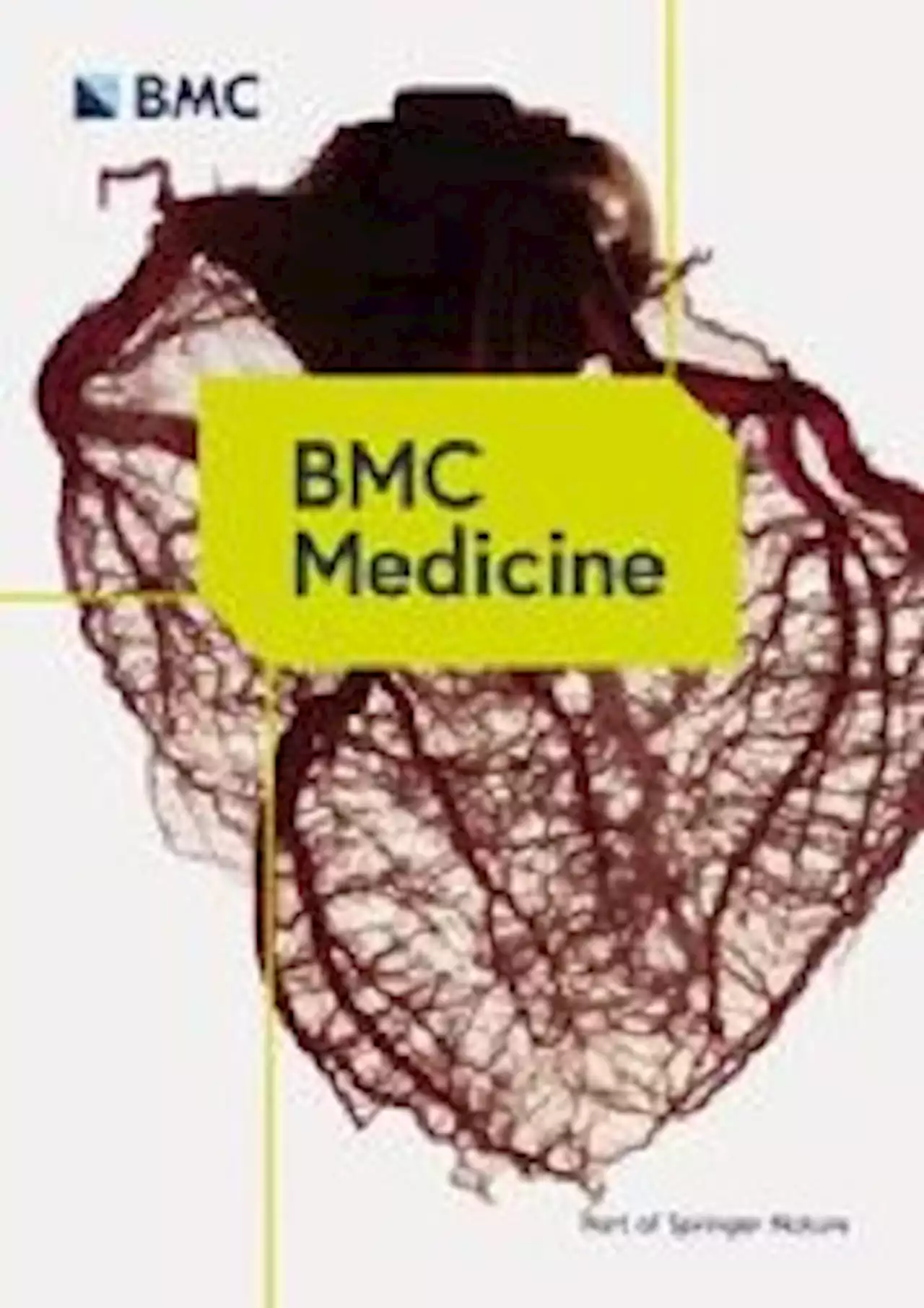Cardiovascular disease screening positively impacts quality of life: No significant emotional distress found CVD Cardiovascular Heart Cardiology Medicine ClinicalMedicine escardio
By Pooja Toshniwal PahariaMay 29 2023Reviewed by Benedette Cuffari, M.Sc. In a recent study published in European Heart Journal Open, researchers evaluate the impacts of population-level cardiovascular disease screening on health-related quality of life . The effects of receiving an invitation for screening, positive test results, prophylactic treatment initiation, enrollment in surveillance schemes at surgical departments, and preventive surgical repair on HRQoL were assessed.
Sources of harm include physical discomfort from screening, as well as subsequent therapy and psychological discomfort from risk awareness and enrollment in surveillance programs. Both sources can be measured using generic HRQoL instruments such as the EuroQoL. Repeated HRQoL measurements were obtained for up to three years using EuroQol scales such as the EuroQol 5-dimension profile index to assess anxiety/depression using the preference weights for Denmark and the EuroQol visual analogue scale to evaluate overall health. The mean values for changes in scores in the events following CVD screening were calculated.
Results The attendees were reportedly slightly better off HRQoL-wise than non-attendees on all EuroQol scales. In regard to the receipt of test results, initiating prophylactic therapy, being recruited in surveillance schemes, and surgical restoration, CVD screening did not significantly impact HRQoL. However, a minor effect of being recruited for CVD surveillance schemes on emotional discomfort was observed in the unmatched data but not in the matched data.
United Kingdom Latest News, United Kingdom Headlines
Similar News:You can also read news stories similar to this one that we have collected from other news sources.
 'Every Bite Counts': The importance of monitoring diet in the first 24 months of life'Every Bite Counts': The importance of monitoring diet in the first 24 months of life CDCgov eatrightPRO theNCI diet health childhealth child children
'Every Bite Counts': The importance of monitoring diet in the first 24 months of life'Every Bite Counts': The importance of monitoring diet in the first 24 months of life CDCgov eatrightPRO theNCI diet health childhealth child children
Read more »
 The impact of non-alcoholic fatty liver disease and liver fibrosis on adverse clinical outcomes and mortality in patients with chronic kidney disease: a prospective cohort study using the UK Biobank - BMC MedicineBackground Chronic kidney disease (CKD) and non-alcoholic fatty liver disease (NAFLD) frequently co-exist. We assess the impact of having NAFLD on adverse clinical outcomes and all-cause mortality for people with CKD. Methods A total of 18,073 UK Biobank participants identified to have CKD (eGFR 3 mg/mmol) were prospectively followed up by electronic linkage to hospital and death records. Cox-regression estimated the hazard ratios (HR) associated with having NAFLD (elevated hepatic steatosis index or ICD-code) and NAFLD fibrosis (elevated fibrosis-4 (FIB-4) score or NAFLD fibrosis score (NFS)) on cardiovascular events (CVE), progression to end-stage renal disease (ESRD) and all-cause mortality. Results 56.2% of individuals with CKD had NAFLD at baseline, and 3.0% and 7.7% had NAFLD fibrosis according to a FIB-4 | 2.67 and NFS ≥ 0.676, respectively. The median follow-up was 13 years. In univariate analysis, NAFLD was associated with an increased risk of CVE (HR 1.49 [1.38–1.60]), all-cause mortality (HR 1.22 [1.14–1.31]) and ESRD (HR 1.26 [1.02–1.54]). Following multivariable adjustment, NAFLD remained an independent risk factor for CVE overall (HR 1.20 [1.11–1.30], p | 0.0001), but not ACM or ESRD. In univariate analysis, elevated NFS and FIB-4 scores were associated with increased risk of CVE (HR 2.42 [2.09–2.80] and 1.64 [1.30–2.08]) and all-cause mortality (HR 2.82 [2.48–3.21] and 1.82 [1.47–2.24]); the NFS score was also associated with ESRD (HR 5.15 [3.52–7.52]). Following full adjustment, the NFS remained associated with an increased incidence of CVE (HR 1.19 [1.01–1.40]) and all-cause mortality (HR 1.31 [1.13–1.52]). Conclusions In people with CKD, NAFLD is associated with an increased risk of CVE, and the NAFLD fibrosis score is associated with an elevated risk of CVE and worse survival.
The impact of non-alcoholic fatty liver disease and liver fibrosis on adverse clinical outcomes and mortality in patients with chronic kidney disease: a prospective cohort study using the UK Biobank - BMC MedicineBackground Chronic kidney disease (CKD) and non-alcoholic fatty liver disease (NAFLD) frequently co-exist. We assess the impact of having NAFLD on adverse clinical outcomes and all-cause mortality for people with CKD. Methods A total of 18,073 UK Biobank participants identified to have CKD (eGFR 3 mg/mmol) were prospectively followed up by electronic linkage to hospital and death records. Cox-regression estimated the hazard ratios (HR) associated with having NAFLD (elevated hepatic steatosis index or ICD-code) and NAFLD fibrosis (elevated fibrosis-4 (FIB-4) score or NAFLD fibrosis score (NFS)) on cardiovascular events (CVE), progression to end-stage renal disease (ESRD) and all-cause mortality. Results 56.2% of individuals with CKD had NAFLD at baseline, and 3.0% and 7.7% had NAFLD fibrosis according to a FIB-4 | 2.67 and NFS ≥ 0.676, respectively. The median follow-up was 13 years. In univariate analysis, NAFLD was associated with an increased risk of CVE (HR 1.49 [1.38–1.60]), all-cause mortality (HR 1.22 [1.14–1.31]) and ESRD (HR 1.26 [1.02–1.54]). Following multivariable adjustment, NAFLD remained an independent risk factor for CVE overall (HR 1.20 [1.11–1.30], p | 0.0001), but not ACM or ESRD. In univariate analysis, elevated NFS and FIB-4 scores were associated with increased risk of CVE (HR 2.42 [2.09–2.80] and 1.64 [1.30–2.08]) and all-cause mortality (HR 2.82 [2.48–3.21] and 1.82 [1.47–2.24]); the NFS score was also associated with ESRD (HR 5.15 [3.52–7.52]). Following full adjustment, the NFS remained associated with an increased incidence of CVE (HR 1.19 [1.01–1.40]) and all-cause mortality (HR 1.31 [1.13–1.52]). Conclusions In people with CKD, NAFLD is associated with an increased risk of CVE, and the NAFLD fibrosis score is associated with an elevated risk of CVE and worse survival.
Read more »
 High prevalence of galactagogue use among breastfeeding mothers in U.S.Researchers describe the prevalence of galactagogue use among breastfeeding mothers in the United States and their perceived effects on milk production.
High prevalence of galactagogue use among breastfeeding mothers in U.S.Researchers describe the prevalence of galactagogue use among breastfeeding mothers in the United States and their perceived effects on milk production.
Read more »
 Passing on Polycystic Ovary Syndrome: Health risks for Male offspring of Women with PCOSWe spoke to two researchers from karolinskainst about their latest work that investigated how PCOS can affect the health of future generations of men. Read the full interview here:
Passing on Polycystic Ovary Syndrome: Health risks for Male offspring of Women with PCOSWe spoke to two researchers from karolinskainst about their latest work that investigated how PCOS can affect the health of future generations of men. Read the full interview here:
Read more »
 Scientists Report Breakthrough With Very Low Cost Calcium Battery | OilPrice.comTohoku University researchers have recently developed a prototype calcium metal rechargeable battery capable of 500 cycles of repeated charge-discharge. Five hundred cycles is the benchmark for practical battery use.
Scientists Report Breakthrough With Very Low Cost Calcium Battery | OilPrice.comTohoku University researchers have recently developed a prototype calcium metal rechargeable battery capable of 500 cycles of repeated charge-discharge. Five hundred cycles is the benchmark for practical battery use.
Read more »
 Pan-cancer T cell atlas reveals new details of tumor microenvironmentA new study led by researchers at The University of Texas MD Anderson Cancer Center, published today in Nature Medicine, provides a deeper understanding of the vast diversity of T cell states as well as their relationships and roles within the complex tumor microenvironment, bringing a fresh perspective to understanding immunotherapy efficacy in cancer.
Pan-cancer T cell atlas reveals new details of tumor microenvironmentA new study led by researchers at The University of Texas MD Anderson Cancer Center, published today in Nature Medicine, provides a deeper understanding of the vast diversity of T cell states as well as their relationships and roles within the complex tumor microenvironment, bringing a fresh perspective to understanding immunotherapy efficacy in cancer.
Read more »
